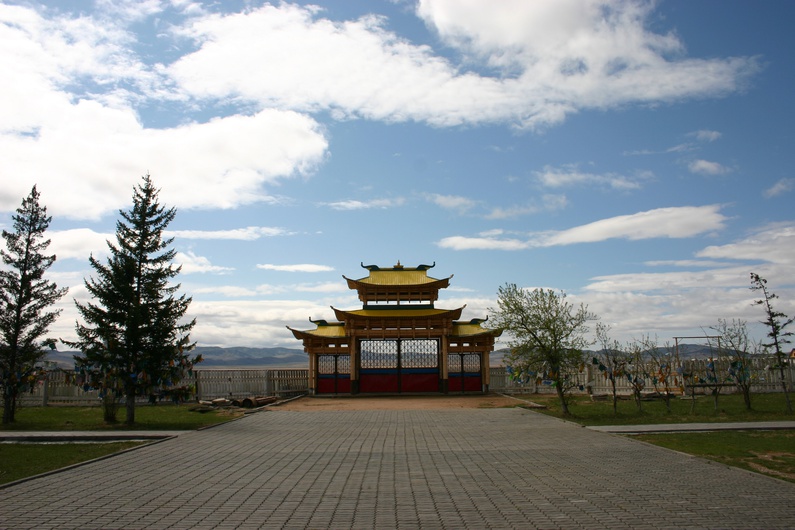
The Doolally Lamas of Siberia
Published on
5600km East of Moscow, on an isolated hilltop in Siberia, stands Russia’s most famous Buddhist monastery- Ivolginsky Datsan. Recently in the media, Russia is portrayed through the lens of Putin and Gazprom, a bellicose bully, intolerant and oppressive. But travel further East and you find a very different Russia.
The datsan is a rag-tag bundle of florid temples and ramshackle lama huts. I arrive early and the sun is yet to burn away the morning mist. Worshippers wander serenely round the perimeter, whispering to themselves or to the sky, spinning the creaking prayer wheels- colourful mashed-up metal cylinders mounted on sticks. The temples are like canted stacks of ornate dinner plates. They lean in and out and slope this way and that. It seems it is only through their combined imbalance that they achieve equilibrium.
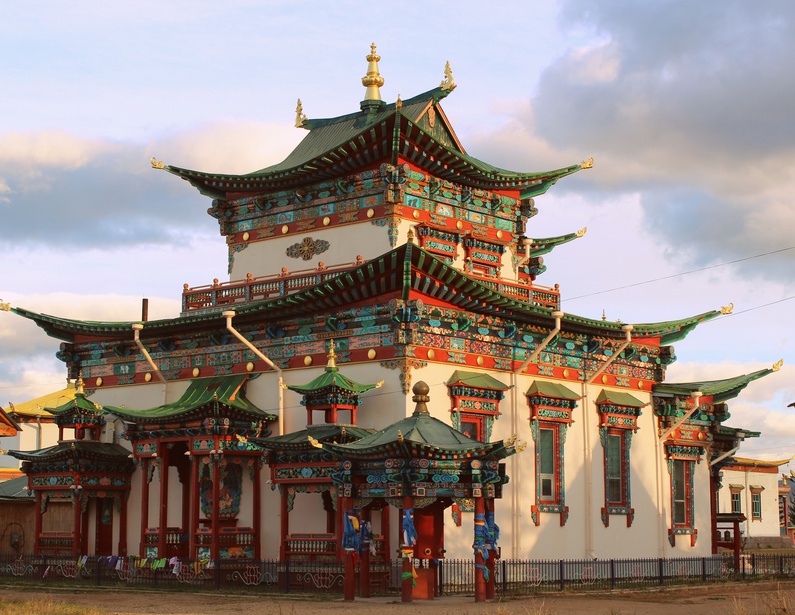 Prayers rumble out of the huts and the temples. The bushes in the surrounding fields are adorned with colourful prayer ribbons and rags. The branches reach out eerily like itinerant necromancers.
Prayers rumble out of the huts and the temples. The bushes in the surrounding fields are adorned with colourful prayer ribbons and rags. The branches reach out eerily like itinerant necromancers.
I was told to come here by a motley assortment of fellow train travellers- a Muslim from Azerbaijan, a Russian Orthodox Christian and an atheist alcoholic. They disagreed on a lot, but they were all sure of one thing; Ivolginsky Datsan is a “special place”. Although it is a Buddhist monastery, the appeal of the Datsan seems to override other spiritual allegiances in Siberia. Anybody can come to this hilltop to seek solace and advice from the in house lamas.
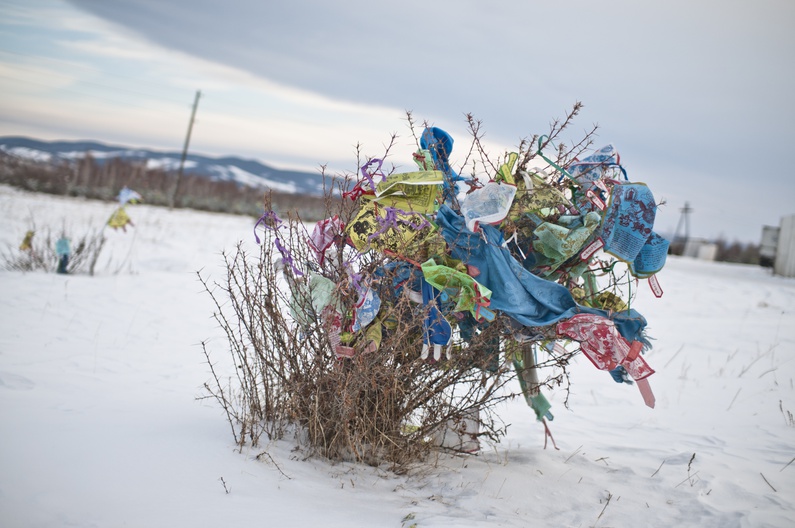 Coming up the hill in a van, I chat to Mikhail. An ethnic Russian, he has travelled several days from Krasnodar to get here. He clings to his seat, bouncing wildly as the van trundles over potholes, a rucksack and sleeping bag clutched between his legs. “I come here every few years,” he tells me, “it’s a special place. The lamas can make your life better.” The driver throws a coin out the window as we pass each rag covered prayer tree.
Coming up the hill in a van, I chat to Mikhail. An ethnic Russian, he has travelled several days from Krasnodar to get here. He clings to his seat, bouncing wildly as the van trundles over potholes, a rucksack and sleeping bag clutched between his legs. “I come here every few years,” he tells me, “it’s a special place. The lamas can make your life better.” The driver throws a coin out the window as we pass each rag covered prayer tree.
Buryatia: a very different beast
As you go further east into Siberia, Russia becomes a very different place. Tarmac gives way to sand, dust and craters. Flash Mercedes give way to improvised vehicles with extensions bolted on. Cows roam the roads as equals, refusing to give way to passing vehicles. Supermarkets are replaced by sprawling markets. Misty mountains quietly make their presence felt behind an ocean of asbestos roofs. The Slavophile-Westerniser debate becomes redundant in this place. Buryatia is a very different beast.
After a few circuits of the datsan, I speak to a middle-aged lady sitting patiently outside a hut with her daughter. Maria has travelled a few hundred miles to come here because her daughter is ill. She explains that they are supposed to be moving to Moscow soon but they fear the illness is a premonitory omen. “I’m a doctor,” she explains, “but the lamas of Ivolginsky Datsan offer something medicine cannot. Speak to the lamas,” she says, “and you’ll understand”.
And so I speak to a lama.
I find a small hut on the outskirts of the datsan, knock and enter. A lama peeps round a corner and beckons me inside. His shaved cranium is perched elegantly atop a slim figure. I close the door. We are alone in the hut. Slices of sunlight break in between the wooden planks.
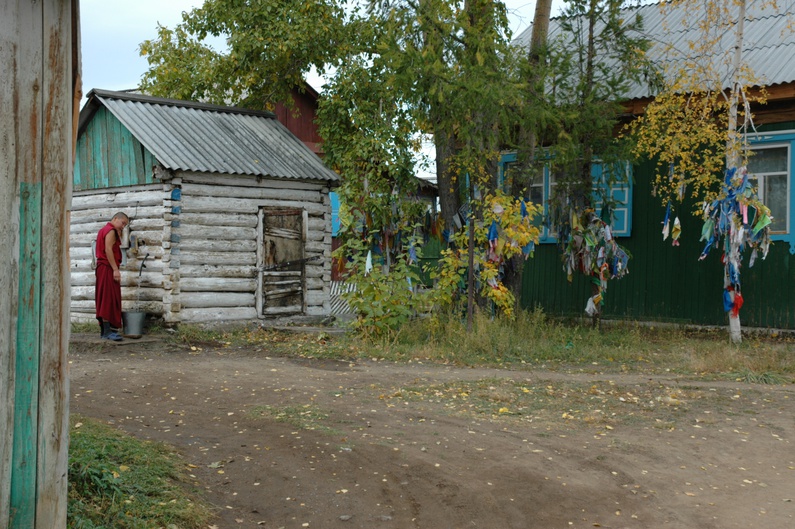 He takes me to a room which contains a wooden bed, a desk and two chairs. He sits at the desk and his maroon robe hangs airily around him. “What can I help you with?” he asks gently in Russian.
He takes me to a room which contains a wooden bed, a desk and two chairs. He sits at the desk and his maroon robe hangs airily around him. “What can I help you with?” he asks gently in Russian.
I feel like he can help me with everything and with nothing. I am neither sick nor spiritually challenged, so I improvise.
“I have bad feelings deep inside me. I don’t know where they come from, but they are very bad feelings.”
He hums and reflects, then asks my date of birth. I tell him and he tells me I am a horse. He says this explains the bad feelings, which he specifies as “sadness, loss of power, waning strength and tiredness”. I concur, although I am a stranger to the feeling of a “loss of power”. He says he can rid me of these feelings with rituals and meditation. He sends me away to get some milk, which will be necessary for my healing.
Russia- an ethnic patchwork
The Buryat people are indigenous to Siberia. They were here before the Russians and they were even here before the 13th century Mongol invasion. Russia is not simply a homogenous, Orthodox, bellicose Slavic country, as many Manichean western media outlets would lead you to believe. It is a patchwork of different cultures and ethnicities, and Buryatia is the perfect illustration of this. 20% of Buryatia is Buddhist, 30% of people in the region are ethnic Buryats, and in Russia as a whole there are about 1.5 million Buddhists.
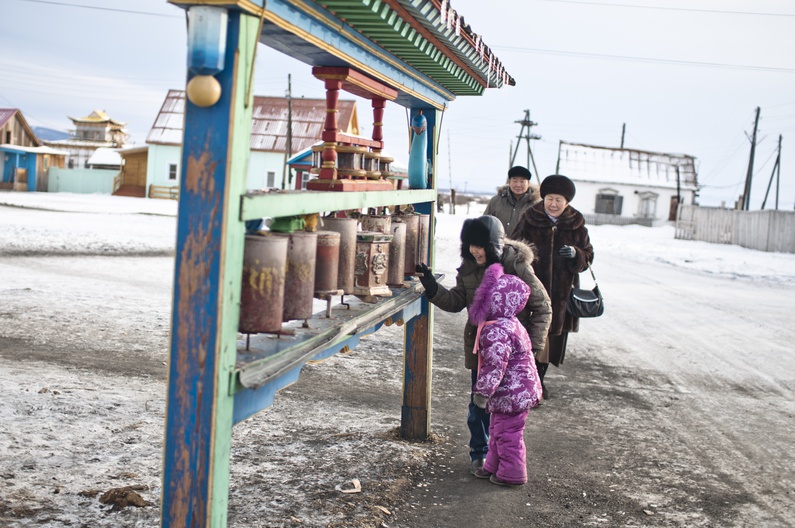 Stalin tried to stamp out Buddhism. Lamas were expelled as “Japanese spies”, believers were shot and Soviet soldiers allegedly rolled cigarettes with ancient Buddhist manuscripts. But since Communism fell Buddhism has been resurgent. In April 2013 Vladimir Putin came to this very datsan to express his “100% support” for Russian Buddhists. “Buddhism plays a significant role in Russia,” Putin told the lamas of Ivolgingsky datsan. “It has always been that way. It is well known that the Buddhists helped during both world wars.” He said Buddhism is a “kind, humanist learning based on love for others and love for one’s country.”
Stalin tried to stamp out Buddhism. Lamas were expelled as “Japanese spies”, believers were shot and Soviet soldiers allegedly rolled cigarettes with ancient Buddhist manuscripts. But since Communism fell Buddhism has been resurgent. In April 2013 Vladimir Putin came to this very datsan to express his “100% support” for Russian Buddhists. “Buddhism plays a significant role in Russia,” Putin told the lamas of Ivolgingsky datsan. “It has always been that way. It is well known that the Buddhists helped during both world wars.” He said Buddhism is a “kind, humanist learning based on love for others and love for one’s country.”
Healing time
I return to the hut with the milk. The lama stoops and pulls a bag of green powder out of a drawer, racks up a line on a bed of sand and lights it. The room fills with malodorous fumes.
The lama sits me up straight, arranges my hands on my midriff and tells me that while he chants, I should breathe in slowly, visualising a red Buddha pouring a vase of goodness, joy and long life over my head. When my lungs are full I should exhale all the evil inside before taking in another breath of goodness, joy and long life.
I close my eyes and the chanting begins. Buddha, in my mind, tips the vase over my head and I swell with goodness. Then I blow out the evil and feel better already. Another breath in, then out and better still.
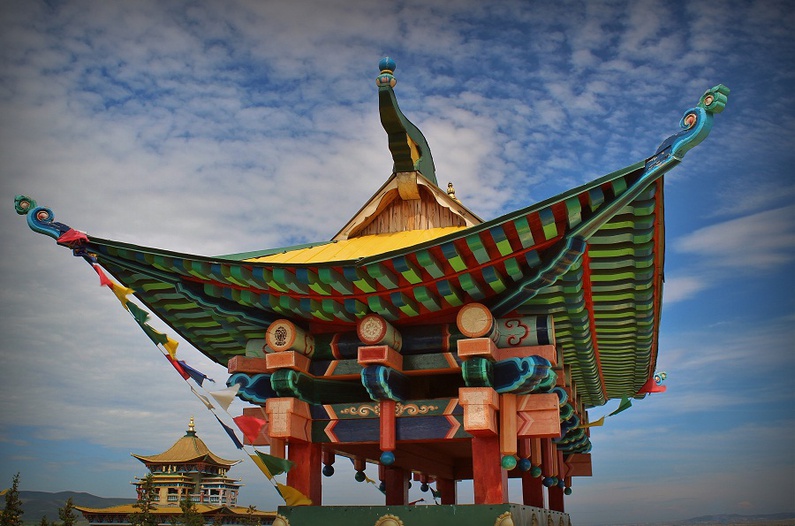 When the chanting is over the lama sends me outside. He tells me to rotate on the spot, to pour milk to the West, then touch the ground, to the North, then touch the ground, to the East and to the South, all the time absorbing goodness, joy and long life from every point on the compass. By the time I complete the ten rotations, I am standing in a milky muddy mush, but I am full of goodness and the dirt is irrelevant.
When the chanting is over the lama sends me outside. He tells me to rotate on the spot, to pour milk to the West, then touch the ground, to the North, then touch the ground, to the East and to the South, all the time absorbing goodness, joy and long life from every point on the compass. By the time I complete the ten rotations, I am standing in a milky muddy mush, but I am full of goodness and the dirt is irrelevant.
Back inside I am given a final blessing, the goodness is sealed inside and a drop of scented oil is smeared on my forehead.
When I emerge I am infinitely better (when I went in I was already quite good). Whether this improvement is the truth or an illusion is beside the point- when it comes to your ‘soul’, all you have are your feelings- I feel better so I am better and I leave it at that. 